In 2017, then Kenya’s President Uhuru Kenyatta launched a pilot program for Universal Health Coverage in four of the country’s 47 counties to see if the government could provide affordable or free health services.
Plans for a national rollout have failed twice and the government’s third attempt slated for later in the year faces an unexpected obstacle.
The UHC pilot program was conducted in four counties — Isiolo, Kisumu, Machakos, and Nyeri — that were selected because they have a high incidence of both communicable and non-communicable diseases, maternal mortality, and road traffic injuries.
Plans for a national rollout have failed twice and the government’s third attempt slated for later in the year faces an unexpected obstacle: Kenyan healthcare workers are not boarding that ship.
The health workers have termed the government’s renewal of the contracts of more than 8,000 healthcare workers it employed under the UHC as “discriminatory.”
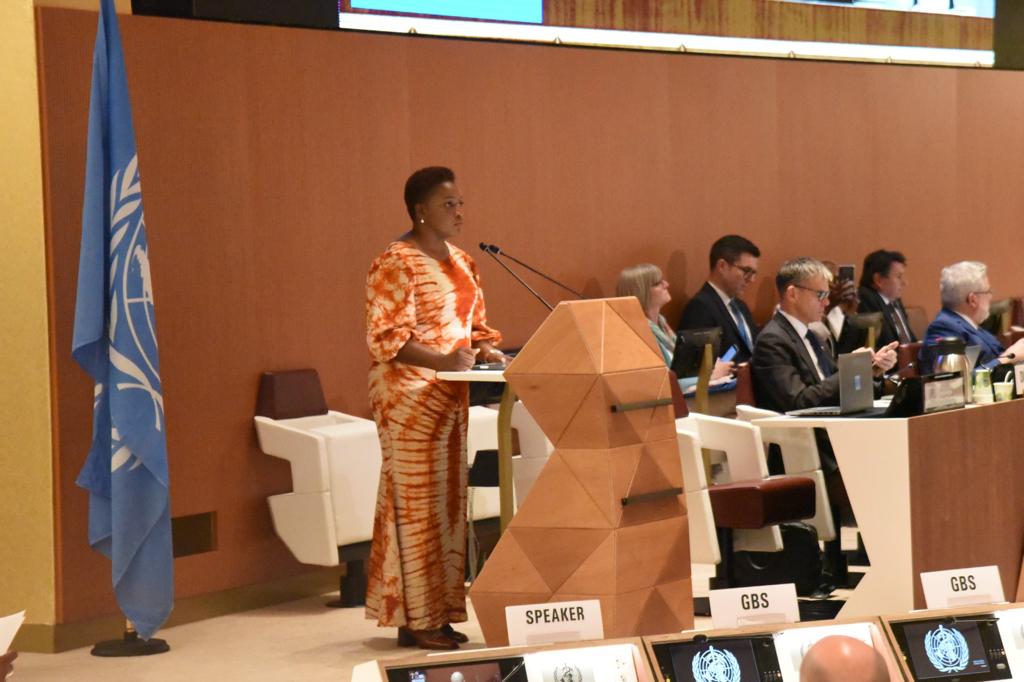
In a May 31, 2023 letter to the Council of Governors, the Cabinet Secretary for Health Nakhumicha Wafula said the contracts for 8,571 health workers would be renewed.
The Cabinet Secretary indicated in the letter that the Public Service Commission — the body that hires government employees — had agreed to extend the contracts.
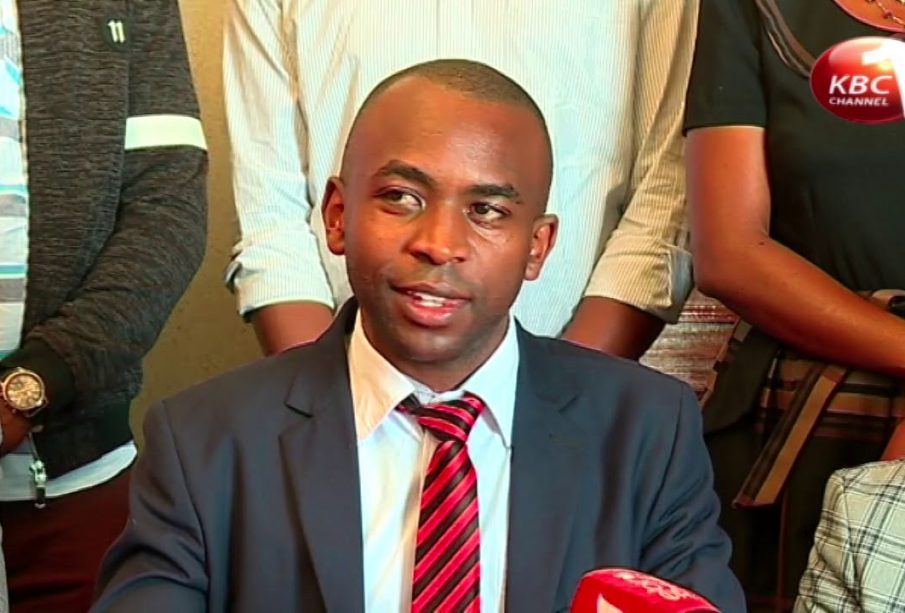
Peterson Wachira, an official at the Kenya Union of Clinical Officers — the second most populous health workers union with 26,804 members as of 2022 — told the Alliance for Science that the hiring is “irregular, and our biggest contention is on the inequity in the pay.”
“A clinical officer under UHC earns about 48 percent less than what their counterpart on permanent and pensionable terms earn yet they work in the same hospitals and for the same number of hours,” Wachira said.
In 2015, health workers and trade unionists called for the return of healthcare services to the national government.
A study showed that workload trebled in public health facilities that took on the UHC pilot program.
In a February 2023 petition to the Ministry of Health, nine associations representing all the specializations of health workers in Kenya argued that a portion of the 8,571 workers got one-year contracts and would be out of work at the end of each year.
Kenyans in the 23 arid and semi-arid counties who had suffered systemic neglect since independence do not want healthcare services to go back to the national government.
The health workers’ associations also said that even with the temporary contracts, they still had unique staff numbers that healthcare workers have, and they would not get employed in the public service because, in the Ministry of Health’s database, the numbers were “active.”
Deliberate sabotage
This complaint is one of the innumerable that health workers have had against the government’s decisions since healthcare services were devolved from the national government in 2010.
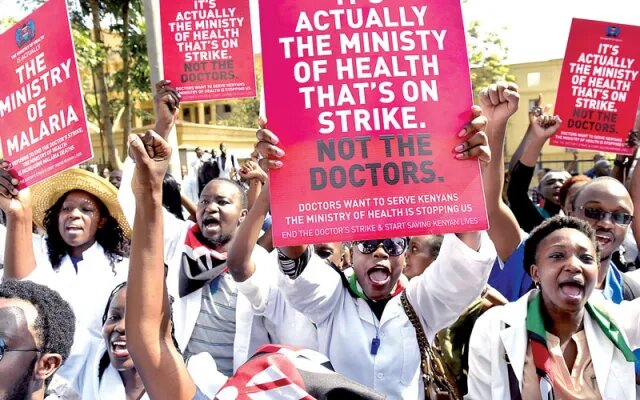
In 2013, Kenya’s healthcare workers went on a nationwide strike — the fourth one after others in 1971, 1981, and 1994.
Many more strikes followed as they complained over delayed salaries, lack of commodities, and deplorable working conditions.
“There is a crisis in the implementation of devolved health services due to deliberate steps by the Ministry of Health to claw back on the health function.”
In 2015, health workers and trade unionists called for the return of healthcare services to the national government.
Not everyone, especially the Kenyans in the 23 arid and semi-arid counties who had suffered systemic neglect since independence, wanted a return of healthcare services to the national government.
Healthcare workers have continually expressed their preference for working in the national government due to delayed salaries and claims that the counties were “less effective in managing hospital infrastructure on maternal healthcare services.”
Leaders from the counties also blame the national government for what is ailing healthcare in their areas.
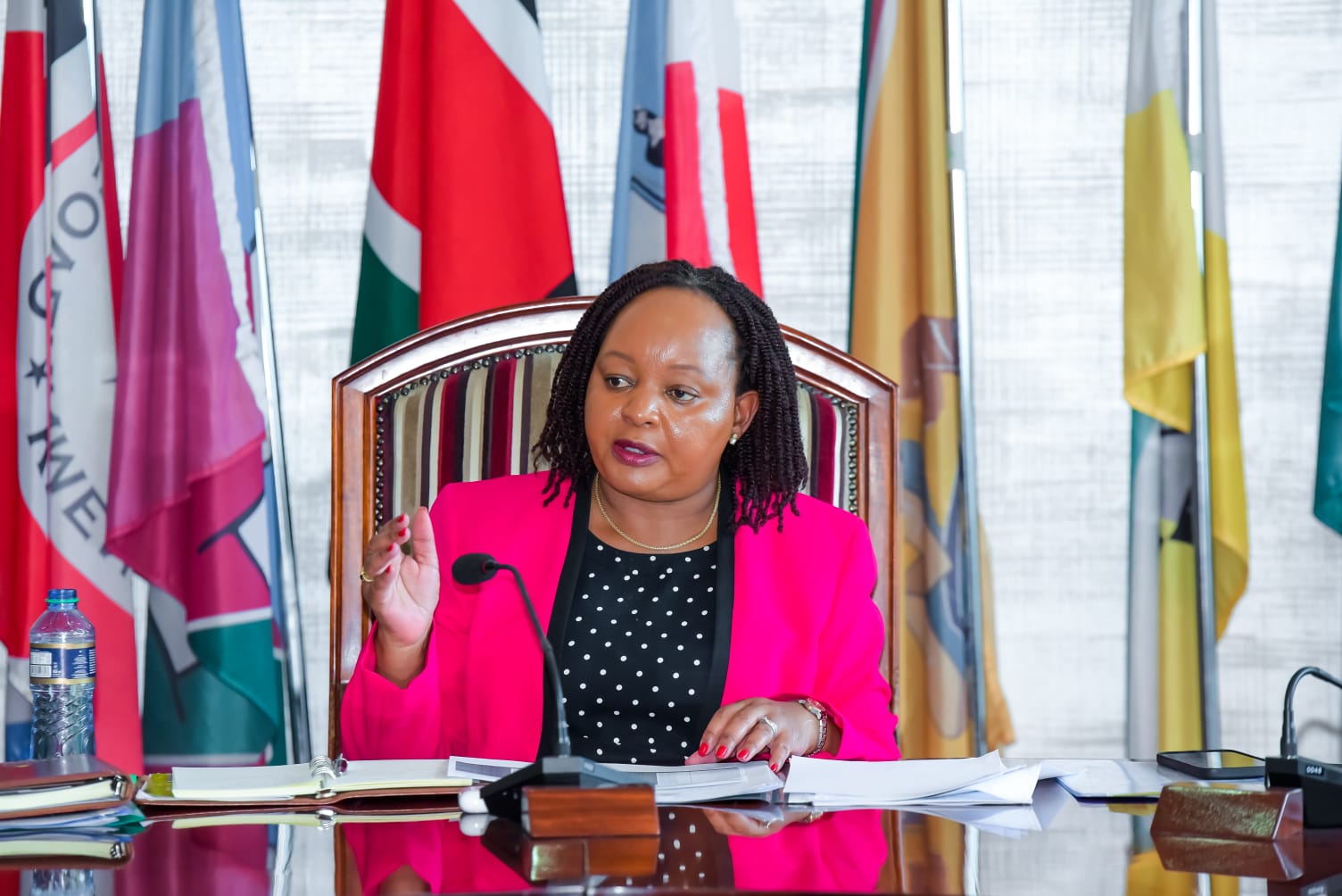
Kirinyaga governor Ann Waiguru, who is also the chair of the Council of Governors said that the National Treasury had not released 676 million dollars to the counties for the 2022/2023 financial year, denying money to function for as long as 15 months.
“There is a crisis in the implementation of devolved health services due to deliberate steps by the Ministry of Health to claw back on the health function, thus derail the gains made since 2013,” she said.
“The call to return health services to the national government is an attempt to deny regions a chance to improve healthcare systems for their people.”
The governor faulted the national government for its control over community health volunteers, the lay members of the community who carry out health education.
In her statement, Governor Waiguru also faulted “development partners for colluding, supporting and funding the national government ministries and interventions that are devolved.”
Khatra Ali, the Director of Health Services at the Council of Governors, said that there was a deliberate sabotage of devolution.
Ms Ali cited counties such as Garissa, with the country’s highest maternal mortality, a ghastly statistic that neglect contributed to.
Training a nurse in Kenya costs 64,000 dollars and the country suffers a loss of 502,000 dollars when a nurse emigrates.
“The call to return health services to the national government is an attempt to deny regions a chance to improve healthcare systems for their people,” Ms Ali said.
The counties had employed 56,000 healthcare workers by 2022, but the country still suffers from a chronic shortage of health workers.
According to a recent analysis [PDF], Kenya had a total of 189,932 health workers as of 2020, translating to a ratio of 30.14 midwives and clinicians per 10,000 people.
This figure falls significantly below the World Health Organization’s recommended ratio of 44.5 midwives and clinicians per 10,000 individuals.
The shortage of healthcare workers persists due to inadequate funding for hiring.

For instance, in 2018/2019 financial year, Laikipia County spent close to 98 percent of its health budget on paying salaries.
Due to the lean times, some health workers seek opportunities outside the country, mainly in the United States.
This out-migration of health workers costs Kenya tens of millions of dollars.
“Interns have been waiting for eight to 12 months to be posted. The government violates its guidelines and doctors who cleared university last December have not been posted.”
The Kenya Labourforce Survey indicates that six percent of Kenya’s nursing workforce have applied to leave the country, with the top five preferred destinations being the USA (54.4 percent), Namibia (16.2 percent), Australia (11.4 percent), Canada (3.8 percent), and the UK (2.9 percent).
A 2006 study estimated that training a medical doctor in Kenya, from primary school through medical college, costs 65,997 dollars, which would be equivalent to 99,311 dollars, adjusted for inflation today.
Each time a doctor leaves the country, Kenya incurs a loss of 779,371 dollars.
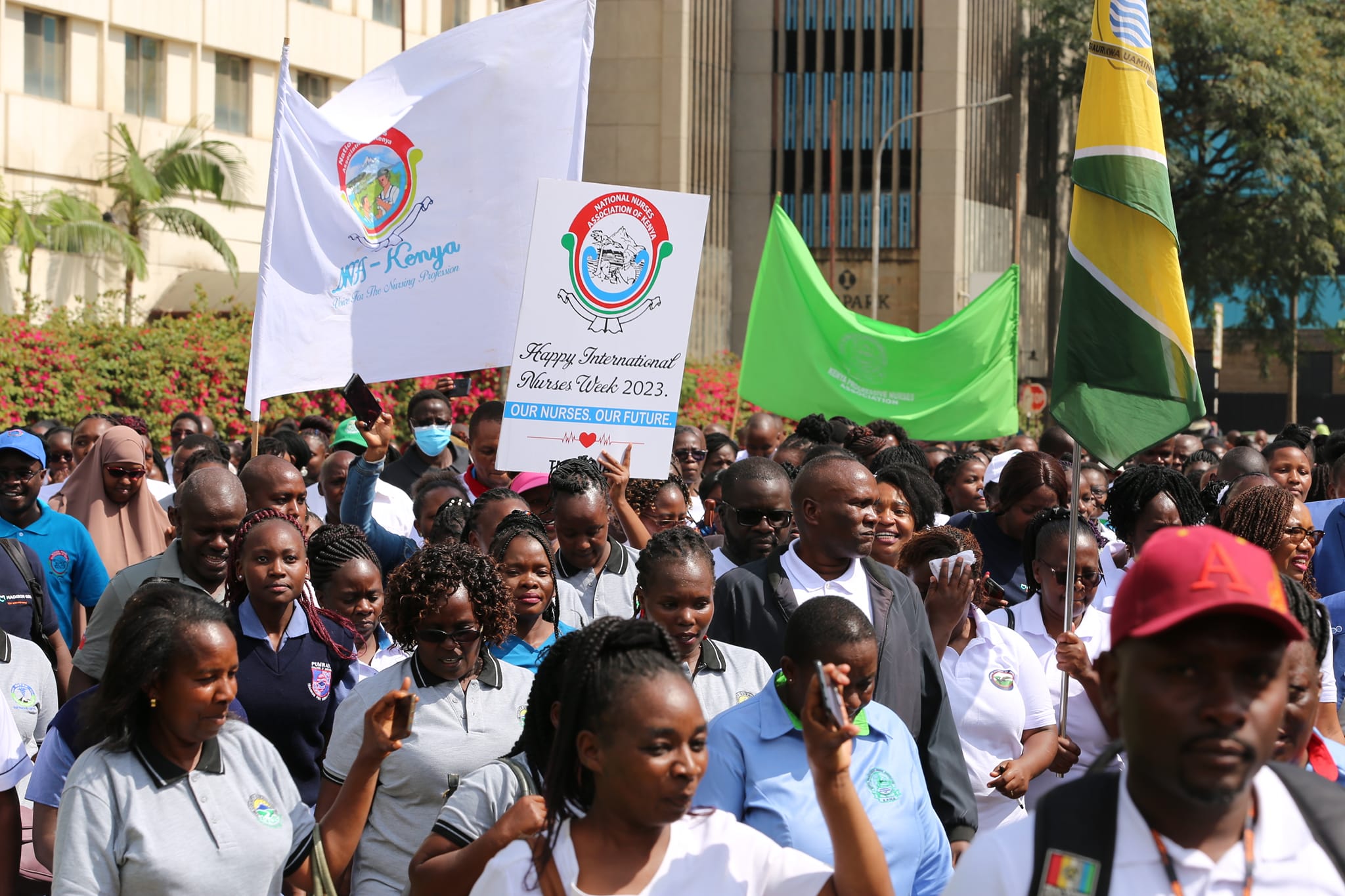
Training a nurse in Kenya costs 64,000 dollars and the country suffers a loss of 502,000 dollars when a nurse emigrates.
Ironically, in 2021, the Ministry of Health signed a deal with the UK government to send nurses to the European nation.
In response to the urgent need for more healthcare workers, Kenya has implemented strategies such as task shifting.
Nothing attracted the ire of health workers more than the government importation of doctors from Cuba in 2018 as Kenyan doctors remained jobless.
This approach involves reallocating tasks from highly qualified health workers to those with shorter training and fewer qualifications, enabling more efficient utilization of the available human resources for health, as outlined by the World Health Organization.
UK announced that Kenya, Ghana, and Nigeria, will receive funds to optimize, build, and strengthen their health workforce.
Health professionals, such as professor of Psychiatry Lukoye Atwoli who is also the dean of Aga Khan University Medical College of East Africa, criticized the move, terming it as quackery that would endanger patients.
Nothing attracted the ire of health workers more than the government importation of doctors from Cuba in 2018, with higher salaries and better perks as Kenyan doctors remained jobless.
Nairobi-based doctor, Andrew Githeria, said that the Ministry of Health guidelines state that interns must be posted no more than a month after completing their five-year studies.

“Interns have been waiting for eight to 12 months to be posted. The government violates its guidelines and doctors who cleared university last December have not been posted,” Dr Githeria said.
The unemployment of doctors is not due to a lack of need for their services, but due to budgetary constraints.
“Counties cannot carry on with this function leading to the massive unemployment of thousands of doctors amid a critical shortage of these professionals in public service,” Dr Githeria said.
Other, wealthier countries are coming to Kenya’s aid.
In 2018/2019 financial year, Laikipia County spent close to 98 percent of its health budget on paying salaries.
In a statement, the UK government announced that Kenya, Ghana, and Nigeria, will receive funds from the Official Development Assistance budget for 2022 to 2025, to “optimize, build, and strengthen the health workforce in these three African countries.”.
Although the statement does not specify whether the funds will be channeled through the Ministry of Health, it suggests that the UK government has set aside an additional 10.7 million dollars for a non-profit organization to coordinate this partnership.

The non-profit, referred to as a “delivery coordinator,” will likely be responsible for managing the funds before releasing them to the respective health ministries in the countries.
The Ministry of Health has not yet responded to inquiries regarding how the allocated funds will be utilized to bolster the health workforce.
Kwame Owino, an economist and the chief executive of the Institute of Economic Affairs — a Kenyan think tank that has assessed the impact of the pandemic on the health workforce — listed three priority areas where the funds would be better utilized: “Hiring nurses, acquiring medicines for treating malaria, and bolstering blood reserves which are critically low.”
